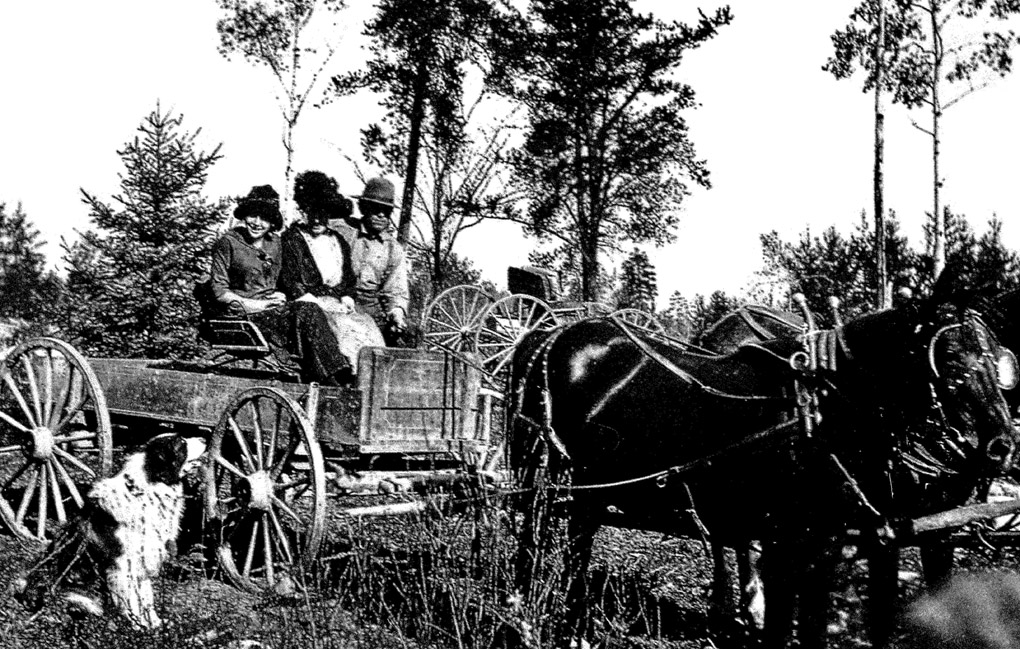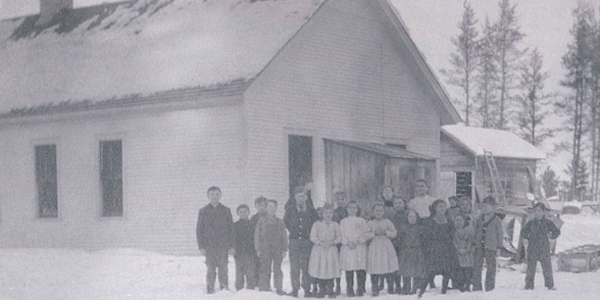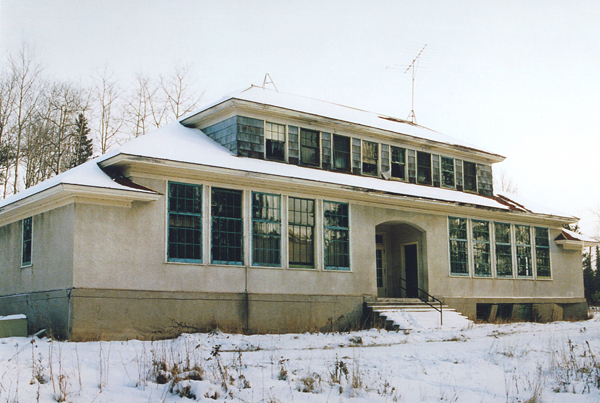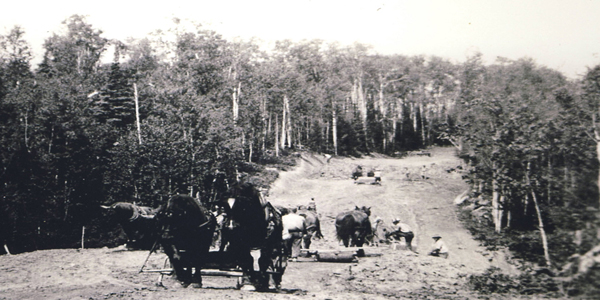A Little History

Life was difficult in the early years. For a fee of $18, a settler received 160 acres on the western frontier thanks to the Homestead Act of January 1, 1863. By 1900, settlers were arriving to Tower from the Duluth-Superior area, traveling over Lake Vermilion by barge or steam-boat in summer and horse teams in winter, to homestead in the Buyck area. They brought with them their family, animals, and all their earthly belongings to start a new life.
Excerpt from: Portage Township: Better Known as Buyck, The First 100 Years.
So this is how it started. In the late 1800's several settlers’ cabins were in the area. Jackson's Hotel was on the south side of the beautiful Vermilion River. In the early 1900's, Charles Buyck moved his family from Superior, Wisconsin to that spot and built. Life was difficult in the early years.
They joined the loggers, timber cruisers, government surveyors, and prospectors looking for gold. They farmed and proved up their homestead claim which required a five year commitment to receive their title from the government. Besides farming, they often found jobs in logging, county road building, or started a business to provide food and lodging for the travelers and livery stables or blacksmith shops for their horses. No schools were yet open and church services were held in different homes.
On the 1900 Census, the families living in Buyck were:
* Polydorip Aubin with his wife Clara and sons Fredric and James
* Daniel McInnis with his daughter Annie and son Thomas
* Henry Leigh with daughters Jane and Minnie
* Samuel Nordin with his wife Anna, son William and daughter Ethel
* Customs Officer Floyd Townsend with his wife Ettie and sons, Harry, Leon and Charles.
Some of the single people were William Orr, John King, a hotel keeper by occupation, Arthur Kitto, a grocery salesman by occupation, and the enumerator for the 1990 Census in the Buyck area, Hans Peterson, Oscar Hanson, John Swallen, Peter Anderson (who homesteaded and then sold to Joseph and Catherine Mankus) and Josie Lombarri who was a hotel keeper. They were survivors. By the 1905 Census, Polydorip Aubin, John Swallen, Peter Anderson, Oscar Hanson, John King and Customes Office Lloyd Townsend with his son Harry still remained. They were joined by many new settlers.
The new families living in the area then were:
* Julian and Amelia Block with son Julian Jr.
* Ole and Lina Hanson with children Martin, Annie, Robert and Arthur
* Peter and Antonia Gruska with children Henry, Lou, Mary, Annie, and James
* Ole and Rachel Kjostad with two children, and the Buyck family
* Charles and Clarisse (DeVoss) Buyck came with children Emily, Charles, Frank and Peter. Charles DeVoss, Clarisse Buyck's father, also lived in the area.
Some of the other single settlers were Ceasar Coppens and his brother Dominic, John Branvold, Christ Christofferson, and Alois Claus.








